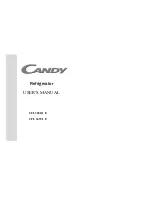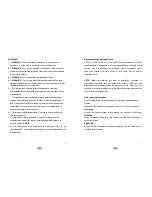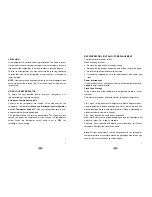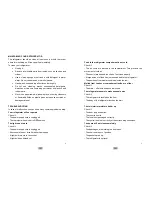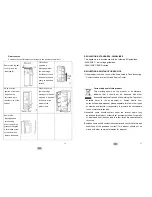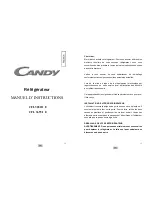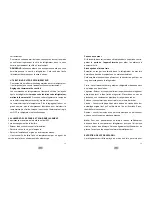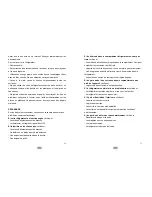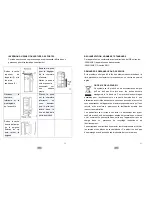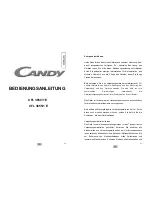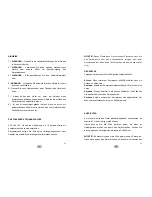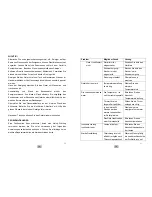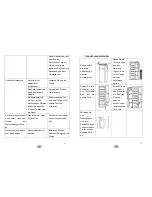
4
WARNING
1) WARNING
– Keep ventilation openings, in the appliance
enclosure or in the built-in structure, clear of obstruction.
2) WARNING –
Do not use mechanical devices or other means to
accelerate the defrosting process, other than those recommended
by the manufacturer.
4) WARNING –
Do not damage the refrigerant circuit.
5) WARNING –
Do not use electrical appliances inside the food
storage compartments of the appliance, unless they are of the type
recommended by the manufacturer;
6) The instructions shall state that the appliance has to be
unplugged after use and before carrying out user maintenance on
the appliance.
7) This appliance is not intended for use by persons (including
children) with reduced physical, sensory or mental capabilities, or
lack of experience and knowledge, unless they have been given
supervision or instruction concerning use of the appliance by a
person responsible for their safety.
8) Children should be supervised to ensure that they do not play
with the appliance.
9) If the supply cord is damaged, it must be replaced by the
manufacturer, its service agent or similarly qualified persons in
order to avoid a hazard.
10) The instructions shall state that the appliance has to be
unplugged after use and before carrying out user maintenance on
the appliance.
5
Recommended Earthing Method
A 230 Volt /50 Hz AC only 10 ampere fused and properly earthed
electrical supply is required. It is recommended that a separate circuit
serving only this appliance be provided. Use a receptacle which
cannot be turned off with a switch or pull chain. Do not use an
extension cord.
NOTE:
Before performing any type of installation, cleaning, or
removing a light bulb, turn the refrigerator control to OFF and then
disconnect the refrigerator from the electrical source. When you are
finished, connect the refrigerator to the electrical source and reset the
control to the desired setting.
Noises during Operation
The following noises are characteristic of refrigeration appliances:
Clicks
Whenever the compressor switches on or off, a click can be heard.
Humming
As soon as the compressor is in operation, you can hear it humming.
Bubbling
When refrigerant flows into thin tubes, you can hear bubbling or
splashing noises.
Splashing
Even after the compressor has been switched off, this noise can be
heard for a short time.

